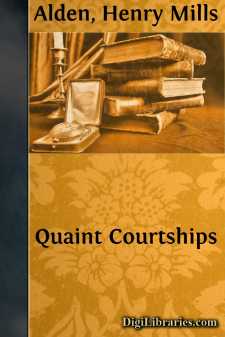Categories
- Antiques & Collectibles 13
- Architecture 36
- Art 48
- Bibles 22
- Biography & Autobiography 813
- Body, Mind & Spirit 142
- Business & Economics 28
- Children's Books 15
- Children's Fiction 12
- Computers 4
- Cooking 94
- Crafts & Hobbies 4
- Drama 346
- Education 46
- Family & Relationships 57
- Fiction 11829
- Games 19
- Gardening 17
- Health & Fitness 34
- History 1377
- House & Home 1
- Humor 147
- Juvenile Fiction 1873
- Juvenile Nonfiction 202
- Language Arts & Disciplines 88
- Law 16
- Literary Collections 686
- Literary Criticism 179
- Mathematics 13
- Medical 41
- Music 40
- Nature 179
- Non-Classifiable 1768
- Performing Arts 7
- Periodicals 1453
- Philosophy 64
- Photography 2
- Poetry 896
- Political Science 203
- Psychology 42
- Reference 154
- Religion 513
- Science 126
- Self-Help 84
- Social Science 81
- Sports & Recreation 34
- Study Aids 3
- Technology & Engineering 59
- Transportation 23
- Travel 463
- True Crime 29
Different Girls
Categories:
Description:
Excerpt
Introduction
It is many years now since the American Girl began to engage the consciousness of the American novelist. Before the expansive period following the Civil War, in the later eighteen-sixties and the earlier eighteen-seventies, she had of course been his heroine, unless he went abroad for one in court circles, or back for one in the feudal ages. Until the time noted, she had been a heroine and then an American girl. After that she was an American girl, and then a heroine; and she was often studied against foreign backgrounds, in contrast with other international figures, and her value ascertained in comparison with their valuelessness, though sometimes she was portrayed in those poses of flirtation of which she was born mistress. Even in these her superiority to all other kinds of girls was insinuated if not asserted.
The young ladies in the present collection are all American girls but one, if we are to suppose Mr. Le Gallienne's winning type to be of the same English origin as himself. We can be surer of him than of her, however; but there is no question of the native Americanness of Mrs. Alexander's girl, who is done so strikingly to the life, with courage to grapple a character and a temperament as uncommon as it is true, which we have rarely found among our fictionists. Having said this, we must hedge in favor of Miss Jordan's most autochthonic Miss Kittie, so young a girl as to be still almost a little girl, and with a head full of the ideals of little-girlhood concerning young-girlhood. The pendant to her pretty picture is the study of elderly girlhood by Octave Thanet, or that by Miss Alice Brown, the one with its ideality, and the other with its humor. The pathos of "The Perfect Year" is as true as either in its truth to the girlhood which "never knew an earthly close," and yet had its fill of rapture. Julian Ralph's strong and free sketch contributes a fresh East Side flower, hollyhock-like in its gaudiness, to the garden of American girls, Irish-American in this case, but destined to be companioned hereafter by blossoms of our Italian-American, Yiddish-American, and Russian-American civilization, as soon as our nascent novelists shall have the eye to see and the art to show them. Meantime, here are some of our Different Girls as far as they or their photographers have got, and their acquaintance is worth having.
W.D.H.
by Richard Le Gallienne
Margaret had seen her five sisters one by one leave the family nest, to set up little nests of their own. Her brother, the eldest child of a family of seven, had left the old home almost beyond memory, and settled in London. Now and again he made a flying visit to the small provincial town of his birth, and sometimes he sent two little daughters to represent him—for he was already a widowed man, and relied occasionally on the old roof-tree to replace the lost mother. Margaret had seen what sympathetic spectators called her "fate" slowly approaching for some time—particularly when, five years ago, she had broken off her engagement with a worthless boy....





